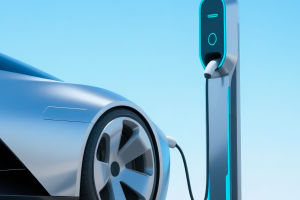Every day, millions of people commute through bustling city streets surrounded by cars. But have you ever stopped to think about how these vehicles influence the air quality around you?
Cars are a major contributor to urban air pollution, affecting health, environment, and overall quality of life. Understanding this impact is key to creating cleaner, healthier cities.
Are you ready to explore how cars shape the air we breathe in urban areas? Let's take a detailed look.
Vehicle Emissions and Pollutants
Cars emit a range of pollutants, including nitrogen oxides (NOx), carbon monoxide (CO), volatile organic compounds (VOCs), and particulate matter (PM). These pollutants come mainly from the combustion of gasoline and diesel fuels in engines. NOx and VOCs react in sunlight to form ground-level ozone, a harmful component of smog.
Particulate matter, especially fine particles (PM2.5), can enter deep into the lungs, causing respiratory and cardiovascular problems. Carbon monoxide, a colorless and odorless gas, reduces oxygen delivery in the body, posing serious health risks.
Traffic Congestion: Amplifying Pollution
Urban traffic congestion intensifies air pollution as cars idle and accelerate frequently, leading to inefficient fuel use and higher emissions per mile. Stop-and-go traffic conditions increase the release of nitrogen oxides and particulates.
Studies have shown that areas near congested roads often have significantly worse air quality than other parts of the city. Residents living close to busy streets are exposed to higher pollutant levels, increasing the risk of asthma and other respiratory diseases.
Impact on Public Health
The World Health Organization reports that urban air pollution contributes to millions of premature deaths annually. Exposure to car-related pollutants can cause or worsen asthma, bronchitis, heart disease, and even affect brain development in children.
Long-term exposure increases risks of lung cancer and chronic respiratory diseases. Vulnerable populations such as children, elderly people, and those with pre-existing health conditions are particularly at risk.
Environmental Consequences
Besides health impacts, car emissions contribute to environmental problems like acid rain, climate change, and biodiversity loss. Nitrogen oxides and sulfur dioxide from vehicle emissions combine with atmospheric moisture to form acid rain, damaging plants, soils, and water bodies.
Carbon dioxide, a greenhouse gas emitted by vehicles, drives global warming. Urban heat islands, often intensified by traffic and infrastructure, worsen climate effects and reduce city livability.
Advancements in Cleaner Vehicle Technologies
To combat pollution, automakers are developing cleaner technologies. Electric vehicles (EVs) produce zero tailpipe emissions, significantly improving urban air quality when powered by renewable energy. Hybrid vehicles reduce fuel consumption and emissions by combining combustion engines with electric power.
Improvements in fuel quality and engine design, like turbocharging and direct fuel injection, also lower harmful emissions. Many cities encourage these technologies through incentives and regulations.
Urban Planning and Traffic Management
City planners play a crucial role in mitigating car pollution. Measures like congestion charges, low emission zones, and improved public transportation can reduce the number of polluting vehicles on the road.
Smart traffic management systems optimize traffic flow, minimizing idling time and emissions. Promoting walking, cycling, and car-sharing can also decrease reliance on private cars, lowering overall urban pollution.
Expert Opinions and Research Findings
Prof. Frank Kelly, environmental health expert at Imperial College London, has emphasized in his research that reducing traffic-related air pollution is critical to lowering risks of respiratory and cardiovascular disease.
Dr. Jane Burston, head of the Clean Air Fund, stated in a 2023 report: "Air pollution from cars continues to damage health in cities worldwide, but policy action and technology shifts are making measurable improvements."
Research published in the journal Environmental Science & Technology confirms that cities implementing low emission zones and promoting electric vehicles have recorded measurable declines in nitrogen dioxide and particulate matter levels.
Conclusion: What Can You Do?
Cars undeniably shape urban air quality, with impacts on health and the environment that require urgent attention. Cleaner vehicle technologies, smarter urban design, and personal choices all contribute to a healthier atmosphere.
Next time you get behind the wheel or step into the city streets, think about your role in this urban air story. What changes could you make to help reduce pollution? Walking, cycling, carpooling, or choosing cleaner vehicles are all steps toward fresher, cleaner air for everyone.
How do you feel about the connection between cars and air quality in your city? Share your experiences or ideas on creating healthier urban spaces!


